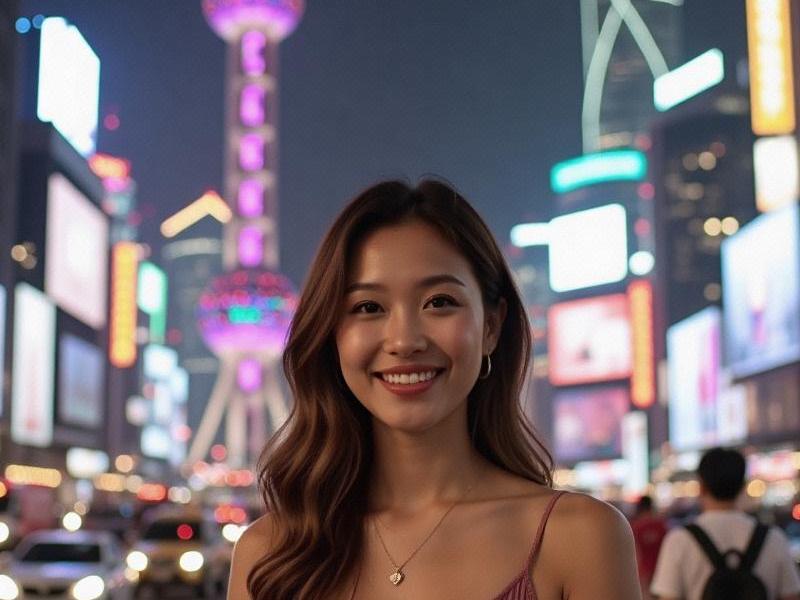Shanghai's Nightlife Renaissance: How Entertainment Venues Are Redefining Urban Culture
⏱ 2025-07-05 17:26 🔖 上海龙凤419
📢0℃

The Evolution of Shanghai's Nightlife Landscape
Along the neon-lit streets of Found 158 and the Bund, a quiet revolution is transforming Shanghai's entertainment industry. Once known primarily for its karaoke bars and exclusive members-only clubs, the city has developed a sophisticated nightlife ecosystem that blends Eastern hospitality with Western club culture.
Historical Foundations: From Jazz Age to Reform Era
Key developmental phases:
1. Golden Age (1920s-1940s): Jazz clubs and dance halls
2. Socialist Period (1950s-1970s): State-run cultural venues
3. Reform Opening (1980s-1990s): Karaoke and disco emergence
4. Globalization Era (2000s-present): International-standard clubs
The New Generation of Entertainment Spaces
Notable venue types:
- High-concept cocktail lounges (Speak Low, Union Trading Company)
- Electronic music temples (Elevator, ALL Club)
爱上海同城对对碰交友论坛 - Hybrid cultural spaces (Modern Sky Lab, Yuyintang)
- Luxury KTV experiences (Party King, V-Show)
Regulatory Reforms and Industry Response
Recent policy impacts:
- Stricter licensing procedures
- Earlier closing times (2AM cutoff)
- Increased safety inspections
- Noise pollution controls
"These changes forced us to innovate," explains Michael Ohlsson, owner of several popular venues. "We've shifted focus from late-night parties to premium dining-and-entertainment experiences."
Cultural Fusion: Shanghai's Unique Nightlife Identity
Distinctive characteristics:
上海花千坊龙凤 - East-meets-West drink menus
- Chinese aesthetic reinterpretations
- Local DJs blending traditional instruments
- Corporate event adaptations
Economic Impact and Market Trends
Industry statistics:
- ¥28 billion annual revenue
- 15% annual growth pre-pandemic
- 62% domestic customer base
- Rising female clientele (now 45%)
Safety and Social Responsibility Initiatives
Industry improvements:
上海夜网论坛 - Professional bouncer training
- Drink-spiking prevention systems
- Designated driver programs
- Mental health awareness campaigns
The Future of Shanghai Nightlife
Emerging trends:
- Sober curious movement
- Immersive theater clubs
- Membership-based collectives
- Technology-integrated experiences
Conclusion: A More Mature Entertainment Ecosystem
Shanghai's entertainment industry has emerged from its regulatory challenges leaner but more sophisticated. The current scene offers something increasingly rare in global nightlife - venues that value experience over excess, quality over quantity, and cultural authenticity over imported formulas. In doing so, Shanghai may be pioneering a new model for urban entertainment that other Asian megacities will likely emulate.
"The Delta Dynamic: How Shanghai Powers the Yangtze River Megaregion""The Velvet Rope Revolution: How Shanghai's Nightlife is Redefining Urban Entertainment"The New Era of Shanghai's High-End Entertainment Scene: Where East Meets West in China's Nightlife Capital【早安上海】从"四大金刚"到智慧餐车:上海早餐工程3.0的时代答卷Shanghai and Its Surroundings: A Dynamic Tapestry of Urban and Rural CharmShanghai 2030: Where Futurism Meets Heritage in China's Most Dynamic MetropolisThe Digital Caravan: Shanghai's Blockchain Revolution on the New Silk Road【风尚解码】海派丽人图鉴:上海都市女性的十二时辰美学实践start
《弄堂方程式:上海城市空间的数学之美》
建筑拓扑学,弄堂微积分,光影微分方程,声音积分曲线,气味偏导数"Neon and Jade: Shanghai's Entertainment Venues Redefine Urban Leisure"
《潮汐之间:上海与周边城市的量子纠缠》弄堂与云端:上海美女的"双面魅力"与文化密码从"海上花"到"云顶宴":上海娱乐会所的世纪变迁与文化密码《弄堂晨曦中的她世纪》start
《沪上梧桐年轮志》
树皮皲裂度,落叶堆积量,遮阳覆盖率,鸟巢密度,记忆点强度start
《霞飞路时尚基因图谱》
旗袍开衩高度,高跟鞋跟数,烫发卷度,口红色号,记忆点强度start
《旗袍褶皱的光学编码》
织物纤维,光线折射,色彩心理学,身体语言,记忆点强度start
《百乐门的分子料理》
味觉受体,风味化合物,呈味阈值,味觉适应,味觉记忆start
《苏州河的拓扑诗学》
波纹分形,渡轮混沌,桥墩流形,霓虹突变,数字同胚外滩风云:从"冒险家乐园"到金融心脏的百年蜕变

